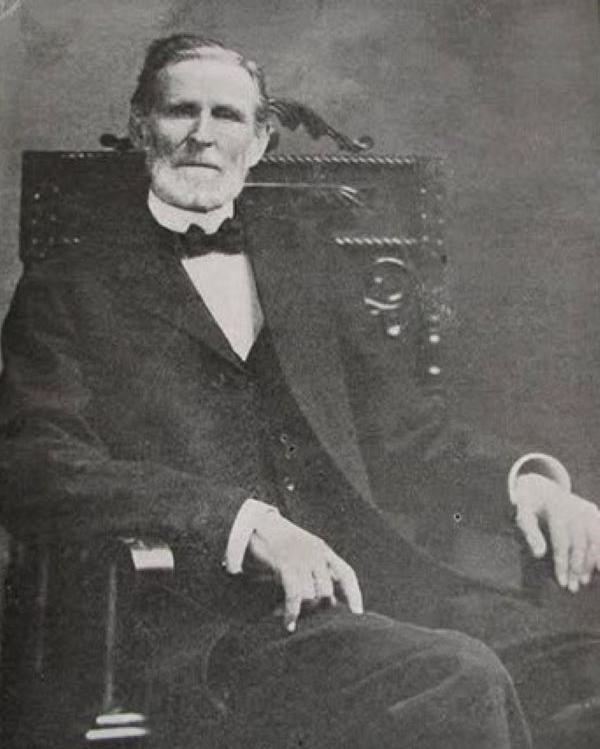Last updated: February 18, 2025
Person
Henry Lucius "H. L." Chapman

"They are all gone. No one can survive that awful ride." H. L. Chapman
H. L. Chapman was the pastor of the Methodist Episcopal Church in Johnstown on the day of the flood. The church is located on Franklin Street and was built from Pennsylvania Main Line Canal materials.
The Chapman's were the first family to live in the parsonage. They moved in mid-April 1889. His first job in the church was in Ligonier, Pennsylvania at twenty years old and he worked at various churches around the region. The Doctor of Divinity and Master of Arts degrees were granted to Chapman from Allegheny College.
On the day of the flood, Chapman was preparing his Sunday sermon. Mrs. Brinker, his wife's cousin, came to his door very alarmed about the flooding and the potential for Johnstown to suffer damage. Chapman seemed not to worry about the rising water. Later in the afternoon, when he saw a man from the B&O Railroad station float past his house on a boxcar, he knew the dam had broken.
Chapman's wife Agnes gave an account of May 31 that was published in Reverend David J. Beale's book, Through the Johnstown Flood by a Survivor:
"About 4 o'clock, Mr. Chapman, who had gone to the front door, returned pale and affrighted, exclaiming that doubtless the reservoir had broken. I looked out of the study window and saw the waves coming; it seemed to me half as high as our house. I ran for our little grand-daughter Nellie, and started up stairs. There were present myself and Nellie, Mrs. Brinker, a neighbor, who had come into our house for safety; our servant girl, and a young Mr. Parker. Mr. Chapman ran into the study to turn out the natural gas in the parlor fireplace. Upon reaching the second floor I looked down to see if Mr. Chapman was coming, when I saw the front door burst open and the water rushing in. It seemed to me to be half way up the front stairs in a moment. I called to Mr. Chapman to come quick, but he was nearly up the back stairs by that time and we were all in the attic a few moments. We all stood there in the middle of the floor, waiting our turn to be swept away, and expecting every minute to be drowned. When our porches were turned loose, and the two book cases fell over, the noise led us to think the house was going to pieces. But fortunately, it stood, because the church stood between us and the swift current. When the noise of houses scraping against ours and the great rush of water had somewhat diminished, Mrs. Brinker asked Mr. Chapman to look out and see if their house was still standing. 'But, said she, If it is not, don't tell me.' He looked out, then turned back, but said nothing. Our little Nellie, only 7 years old, then peeped out and said: 'Yes Mrs. Brinker, your house is gone- your house is gone!' We knew we had to stay there all night, every moment of which was one of anguish and suspense, as there were eighteen feet of water around us and under us. There were nine saved in the attic with us, four of whom got into our second story windows and ran up to where we were; some were as wet as they could be. We gave them clothing and blankets to wrap around them. When daylight came, we all walked and crawled out over the roofs of houses or anything that would hold us until we reached the hillside."
Chapman recalled his own experience in the flood in the June 6th, 1889, edition of The Clarion Democrat. Part of the article said:
"The grinding, crashing sounds on all sides were deafening as the buildings were swept past in full sight with men, women and children on the roofs and clinging to parts of the wreckage. The dreadful havoc did not continue for more than half an hour, and the first thought as we looked down that broad waste in front of us was 'They are all gone. No one can survive that awful ride.' I am glad to know to-day that many of my congregation were rescued. I have sent my family away and hardly know what to do except stay here and render what assistance I can to the poor people."
The Methodist Episcopal Church suffered damage when the flood wave hit town. The church split the wave and saved many other structures near Central Park. It is the only church to survive the Great Flood. Chapman held one of the first church services in after the flood on June 9, 1889. Repairs were made and the church reopened in February 1890.
After the flood, Reverend Chapman along with Reverend Beale from the Presbyterian Church, were in charge of the Morgue Committee. Morgues were set up in church and schools.
Chapman wrote an autobiography titled Memoirs of a an Itinerant. In the book he wrote:
"Those who resorted there [the South Fork Dam] for rest and recreation, did not know at what risk to the lives and property of their fellow citizens below, they maintained their summer homes."
After he retired from the Aspinwall Methodist Episcopal Church, Chapman would preach on invitation.
